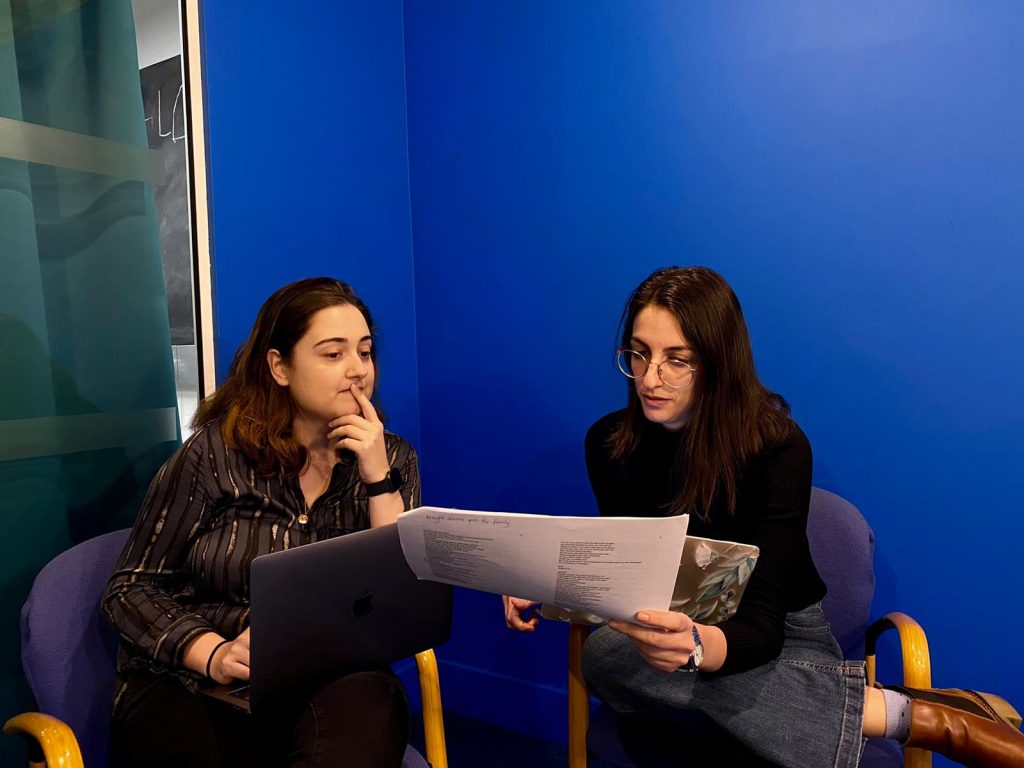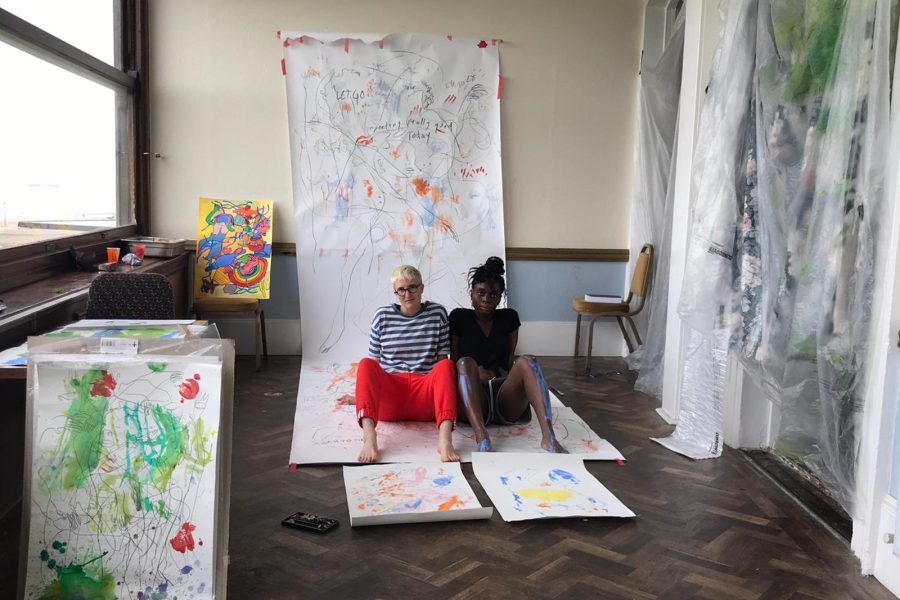Please tell us who you are and what you’ve been working on recently.
We are Antonia Georgieva and Aida Rocci, international theatre-makers based in London, and together we form Aslant Theatre Company. We are constantly asking ourselves how we can flip the dominant narratives, tell the untold stories of the past, examine the overlooked points of view, and retell the classics in a different way. We are both drawn to international stories, whether that is classics that resonate across cultures, translated work, or new work produced internationally.
During the past year, we have been expanding our work and exploration of interdisciplinary practice and adaptations. We started developing an immersive sound experience based on Virginia Woolf’s To The Lighthouse and we created an interactive, audiovisual take on The Bacchae. Most recently, we have been refining a new way of developing work in translation that involves performers, a method we lovingly call ‘embodied translation’.
What drew you to each other’s practice?
Our connection is like a good adaptation: it’s the familiar with a twist. This means that we both have many things in common – a migrant experience, a passion for the classics, a feminist approach, an interest in extending beyond the boundaries of separate discipline, a love of photography, and a healthy obsession with TikTok. But there is always an element of surprise. We complement each other in the areas where we are different.
How will you use the 1:1 FUND?
We will use the 1:1 FUND to continue the development of our new method of translation, which we are calling ‘embodied translation’. We will reflect on our practice as writers, dramaturgs, directors, translators, and migrant theatre-makers. This will allow us to consolidate our artistic platform and empower us to take the next steps in our collaborative practice.
We love to create in collaboration with other creatives, and we also naturally gravitate towards hybrid and interdisciplinary forms. We believe that collaboration across disciplines expands the boundaries of theatre and creates more meaningful work. Our latest idea of ‘embodied translation’ came from an apparent clash between our devising background and experience with literary translation. Working with performers in a devising context can push the creative process in an unexpected direction, while translation can become a largely intellectual and solitary experience. This more established approach to translation may work for literature and other pieces of art which are consumed internally, but a piece of theatre benefits tremendously from the input of performers. By translating with a performer, using their voices and their bodies to build bridges across cultures, the translation gains more depth and resonance.
What is the one thing you most hope to gain from undertaking this work?
By undertaking this collaborative work, we hope to consolidate a method for translation that breaks the traditional boundaries of how translations are typically made. This will be a solid basis to work from when it comes to our ambition to platform international work in translation.

